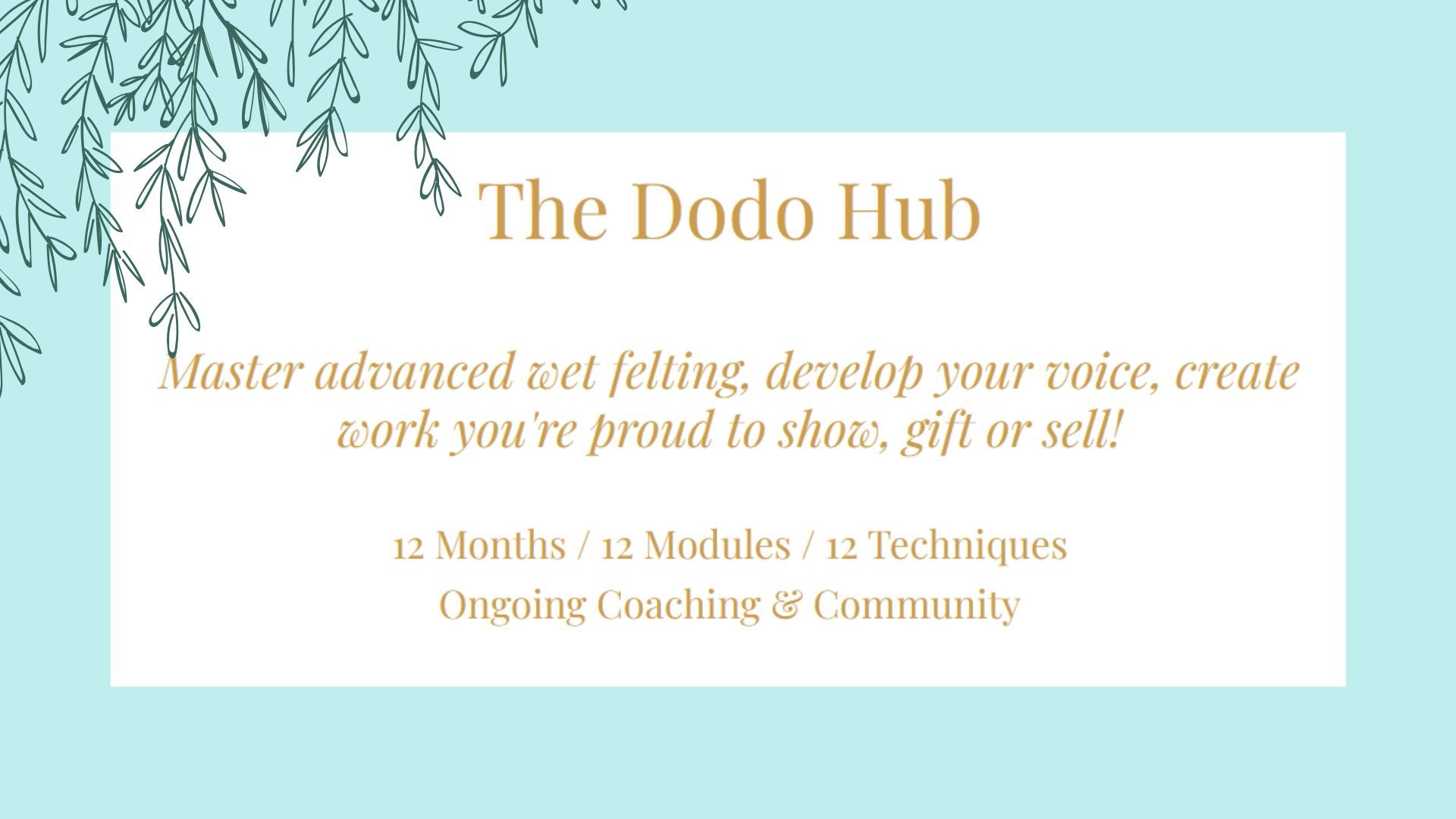The Dodo Blog
If you’ve been waiting for the registration to THE DODO HUB to open, I’ve got good news. You can now sign up here.
WHO IS THE PROGRAM FOR?
You’ve been a felt maker for some years now, but …
- you feel like you’ve reached a plateau, and you don’t know how to develop your work further;
- you wan...
We start wet felting because we’re fascinated by the material and the possibilities of creating all sorts of things, from wearables to sculpture ✨💫
We see what others are doing, so we dream of what we’d like to create. But, let’s face it, wool can be stubborn, and the initial phases aren’t easy.
...It’s finally here, the new format I’ve been mentioning for some time!
So, what is it exactly? If you’ve been following my blog or Instagram account, you’ve heard about THE DODO HUB for sure. Chances are you're curious about TDH and you’d like to know more about it.
Since it’s a one-year program, i...
After experimenting with wet felting for some time, learning the basics and maybe even felting some pieces on a resist, you may feel you’d like your felt to become more professional and well finished. Yet, you may also not know what to do to get to that next level of quality you’d like to achieve.
...In the last couple of weeks, I’ve been making big pre-felt sheets for a piece I’m working on. And every single one of them has given me problems felting.
This can happen for several reasons. It either has something to do with the amount of soap or water, or with the temperature. When this happens, ...
Easter is just around the corner. Here's an idea to make your Easter gifts extra special!
WHAT DO YOU NEED FOR THE BUNNIES?
That will depend on how many you want to make. So, I’ll just give you the list of materials for 4 bunnies like mine. You can adapt the colors and/or decoration to your ow...
So you had a look at the program, and now you’re thinking “Yes, one technique a month. But what do we really felt inside THE DODO HUB?”
I get that it may not be totally clear to you, so let me help you with that.
First, above there's a short video of some of the beautiful pieces made by the partic...
If you’ve been waiting to enroll in THE DODO HUB, I’ve got good news! The registration is open as of now.
Are you new to the DODO world, and not sure what THE DODO HUB is?
- It’s a comprehensive year-long program designed to take you from the intermediate level to an advanced and independent ...
THE STORY BEHIND THIS PROJECT
I belong to a small felt club that gets together once a month via Zoom to felt in a group setting.
In our December meeting, the suggestion was that we create seasonal pieces. We usually felt 3D/sculptural items, and that was planned for December as well. But even thou...
I’m working on a new class that is meant to help felt makers go all the way (smoothly) from total beginner to intermediate. If you’ve recently started wet felting or you’ve been felting for a while, but still feel like there are many gaps in your knowledge, this may be for you.
But I’ll need some t...
Have you noticed the BABY classes are back?
Many of you have been asking to have the baby booties class separately. You’ve also showed interest in having it available “on demand”, which is understandable, since babies grow fast 😊
So, I’ve listened to your requests and created two separate classes:...
Years ago, I wrote a couple of blog posts about prefelts, but there are many details I didn’t mention back then. Since I still get a lot of questions about the topic, I thought it would make sense to write a new, more complete and up to date series.
This first part caters to new felt makers, who I ...









